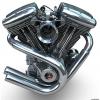Quote from this very recently released study:
https://www.scienced...550413118301220
"Whether or not NMN is taken up by a transporter is currently the subject of debate (Mills et al., 2016; Ratajczak et al., 2016). Brenner, Canto´ and colleagues argue that NMN is not taken up quickly enough to invoke the presence of a transporter and that both NAD+ and NMN undergo extracellular degradation to generate permeable precursors that can be taken up by cells (Ratajczak et al., 2016). On the other hand, Imai argues that this is likely a cell-type-specific phenomenon and that some cell types can rapidly take up NMN (Mills et al., 2016). If so, the identification of the putative transporter will help resolve the debate and help identify which cell types and tissues are able to transport NMN across the plasma membrane. Additional studies with isotopically labeled NAD+ precursors to trace the uptake and metabolism of these molecules should help answer these questions."
Mills et al., 2016 said nothing about some cells can rapidly take up NMN. It is not the speed that is relevant, it is the percentage of NMN that can get into cells before degradation or flushed into urine. A previous study comparing NR and NMN on cells in a dish showed NR and NMN yields similar results. But this study doesn’t translate into a living body because NMN can get flushed out in urine while NMN in a dish has no escape route. The Mills et al., 2016 study demonstrated that only a small percentage of NMN gets into cells since 300mg/kg NMN only raised NAD+ in liver and muscles by 14% for a short period of time. This compares with 185mg/kg NR raising NAD+ in liver and muscles by 100% for a much longer period of time. You can augue forever about how NR gets broken down or not, but NR is effective at raising NAD+ in all tissues tested while NMN is much less effective. A recentl study on NAM showed that NAM does not increase NAD+ in tissues or blood long term. Many people taking Niagen have found NR to be effective for many years without losing effectiveness long term. This is in agreement with the observation that many people who took NAM and Niacin for many years without obvious anti aging results started to see great anti aging results after starting NR. What counts is the end results. It is nice to know exactly how NR achieves the anti aging results, but it is more important to know it works.
Mikedc-"Mills et al., 2016 said nothing about some cells can rapidly take up NMN"
wrong... direct quote from Mills et al, 2016:
"NMN was quickly utilized to synthesize NAD+ in tissues"
Mikedc- "the percentage of NMN that can get into cells before degradation or flushed into urine."
You keep making this claim that NMN is "flushed out in urine", which I have never seen any basis for, other than your imagination.
In fact, this study shows NMN is retained in the body far longer than NAM:
Also you admit NR -> NMN-> NAD+, yes? But somehow, you imagine that exogenous NMN has no effictient route and gets flushed away, but exogenous NR -> NMN and THAT NMN is somehow different, and doesn't "get flushed away"? Why do you believe this?
Mikedc - "The Mills et al., 2016 study demonstrated that only a small percentage of NMN gets into cells since 300mg/kg NMN only raised NAD+ in liver and muscles by 14% for a short period of time"
Yes, mice fed NMN for 1 year, HALF THEIR LIFE, saw increase NAD+ of 14% in the muscle.
I'm sure you know what homeostasis is.
The Elysium study showed NR elevated NAD+ in liver an impressive 90% at one month, which decreased to 40% at three months. You would have to test for 30 years in humans to have a valid comparison. As you know, in mice, there is also NO comparable 12 month study with NR. You keep comparing apples and oranges.
Edited by able, 18 March 2018 - 05:41 PM.































 This topic is locked
This topic is locked



























